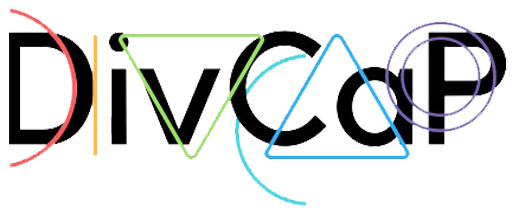7 Stages Model: What stage is your institution in now?
Quick scan of the organization
Diversity Capacities Project is focusing on how diversity is reflected in adult education and how diversity is embedded in the policy and the structure of adult education organisations. In particular, we focus on the categories of “culture”, ethnicity, religion, encompassing challenges in adult education in relation to migration, without forgetting gender, age, class or disabilities.
The 7 Stages Model is a proven instrument for self-evaluation of an organisation. Based on a simple questionnaire, the score gives an indication of the degree of diversity, looking at the multiculturality. The model consists of 7 stages:
Scroll over then names of the stages to get a definition of them
We advise you to use the 7 stages model as an organisation scan tool, according to the key question “in what stage your organisation is”: monocultural or intercultural?
Please answer the following questions with a yes or no:
- My organisation has migrants among its clients.
- In my organization an intercultural training has been done aimed at improving sales to migrants.
- My organisation has a policy aimed at improving sales or services to migrants.
- My organisation employs (a) migrant worker(s).
- My organisation has a policy aimed at the influx of migrant workers.
- In my organisation there has been an intercultural training on how to improve intercultural cooperation or leadership.
- My organisation has an intercultural personnel policy.
- In my organisation, intercultural policy is a natural part of diversity policy.
- In my organisation, intercultural policy is a natural part of general quality policy with regard to sales/service provision and personnel.
Where is your organisation now? Monocultural? Intercultural?
- Monocultural organisation: If you answered “no” to all the questions, then your organisation is in Stage 1.
- Service to migrants: If you answered “yes” to question 1.
- Intercultural service management: You answered “yes” to questions 1, 2 and/or 3.
- Inflow of migrant workers: You answered “yes” to questions 1, 2 and/or 3, 4 and/or 5.
- Cross-cultural HRM policy: You answered “yes” to 1, 2 and/or 3, 4 and/or 5, 6 and/or 7.
- Intercultural diversity management: You answered “yes” to 1, 2 and/or 3, 4, 6 and/or 7 and 8.
- Intercultural organisation: You answered “yes” to 1, 2 and/or 3, 4, 6 and/or 7, 8 and 9.
If you have another combination of answers (for instance yes on 1 and 4, but no on 2 and 3) , then this model is not applicable for your organization.
Now you have a clear idea about the situation of your organisation, and it is time to decide what should be changed (or not) and how to do it.
The outcome of the questionnaire:
This classification is not about one organisation being better than another, but indicates what the next step can be for an organisation towards integrated diversity management. It shows, for example, that an organisation first needs customers with a migration background before developing a more intercultural customer-oriented policy. Also, the HRM policy without employees with a migration background will not take other cultures into account.
Interculturalisation is the process of transition from a monocultural to an intercultural organisation and the seven stages model assumes that this process follows a fixed pattern of seven stages inside the organisation.
Literature: Verhoeven en Hoogsteder, Universiteit van Nijmegen/Interetisch Management (1999) (Verhoeven, Jan; Hoogsteder, Jan (1999).
